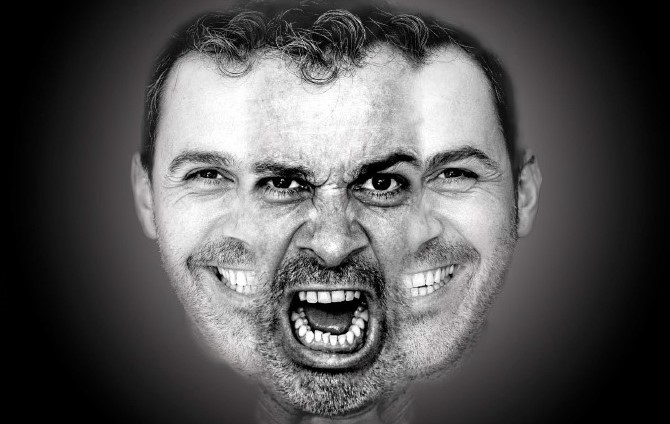Definition
It is necessary to explain the etymological origin of the term predator before defining it. This word is made up of the following parts:
The substantive “praeda” means “prey” in Latin.
The suffix “-tor,” which is synonymous with “agent.”
The adjective Predator describes someone who depreciates. In the case of animals, predate means to hunt individuals of another species in order to survive, as a survival strategy and method of feeding. In this sense, predation is a relationship in which members of one species (predator) hunt members of another species (prey) in order to survive, always resulting in a negative impact on individuals who play the role of prey, such as death or wounds.
Function
According to the eminent Dr. Theodore Millon, the function of Personality would include the following tasks from the standpoint of Psychology:
Preserve life: Avoid harm-Enhance pleasure. Survival is the first ‘task’ of any organism, for which two strategies are essential: (a) achieve existence (enhance pleasure), promote well-being and competition; and (b) preserve it (avoid harm and danger …
Adapt: Actively modify the environment-Passively accommodate. It implies the exchange of energy with the environment, remaining unique and differentiated …
Reproduce: Self-Others. The third evolutionary task for any organism is to guarantee the subsistence of its genes. Biologists describe two reproductive strategies: the ‘r’ (self-centered: reproducing many descendants and abandoning them to their fate) and the ‘k’ (focusing on the others: having few descendants, but caring for them carefully).
Casas et al., 2015, p.149-150.
As a result, personality, rather than having a defensive function, has the function of dealing with various primary tasks in life, such as Preserving life, Adapting to the Environment and, Reproducing itself.
Strategy
As previously stated, if the personality’s function is to face the three primary tasks of life, the question is, “How does or in what way does the personality carry out this function?” In relation to this, the Foro Gallego para el Estudio de la Personalidad states:
The function of all the systems described is to face the tasks of life: Identity, Intimacy and Prosocial Behavior, through two basic strategies: dominate or nurture. All the models presented in the previous chapters share at least two domains for describing, exploring, and classifying personality and personality disorders: Agency and Affiliation.
Agency: ability to act on the environment (physical and human), dominant and active since childhood, vigorous and energetic, with little fear and little anxiety, tendency to fight rather than flee, high search for Novelty (TCI-r), high Active extraversion (NEO-PI-r) and high Extraversion (Kernberg).
Affiliation: capacity for genuine, benevolent and sensitive emotional involvement from childhood, nurturing, altruistic and emotional, tends to approach, enjoys human interaction, has a more secure attachment, is able to function as an attachment figure, high cooperation and Reward Dependency (TCI-r) high Affability (NEO-PI-r) and high POL (Kernberg).
Casas et al., 2015, p.148.
As a result, the two basic strategies known as adaptive capacities—active/pasive (ACT/PAS) environment modification and self-concerned or concerned on others (SELF-OTHERS)—are used to deal with major life responsibilities.
Healthy and Pathological Adaptative Styles
Furthermore, the author establishes that both healthy individuals and those suffering from psychopathology develop these “adaptive capacities,” resulting in an adaptable style:
… Anyone, with or without a personality disorder, uses an adaptive style at different times and settings. “Healthy” personalities flexibly and effectively use both poles of each ability, depending on the environment and the moment. Adaptive styles are useful evolutionary strategies in specific situations, which is why they are present in all individuals without implying personality pathology: passive withdrawal in the face of an inevitable catastrophe (Absent style), aggressiveness and reckless recklessness to save life of a loved one (Predator style), seduction in teaching or politics (Theatrical style), and cooperation and obedience in a team task (Submissive style). And without going to the extreme of extreme situations, styles are a “natural” part of the idiosyncratic style of each individual. What is pathological is the stereotyped, rigid and invasive use, regardless of the situation. Personality disorders are characterized by being rigid to change polarity and by extreme values at some pole. On the other hand, it is common for an overt style to hide (usually to compensate) a more authentic style: for example, the covert narcissist has a behavior of apparent inhibition, respect and submission, which hides the idea of feeling unique and special.
Casas et al., 2015, p.152.
In other words, “adaptive styles” would form a continuum beginning with the healthiest people and ending with the most pathological people, defined by their stereotyped and rigid use.
Personality Disorders
According to the Foro Gallego para el Estudio de la Personalidad, if we distribute Personality Disorders with the two adaptation strategies, we will get the table of adaptive styles shown below:
There are two poles of adaptive abilities that correlate with most personality models: Active Modification of the Environment (ACT) and Centered on Others (OTHERS). If we distribute Personality Disorders in these two dimensions from the discrete values that Millon assigns them, a taxonomy based on adaptive capacities is obtained in which Personality Disorders are dispersed from the center towards four poles that we will call “adaptive styles:” Predator (Active Self-centered, Antisocial Personality Disorder), Theatrical (Active Other-centered, Histrionic Personality Disorder), Absent (Passive Self-centered, Schizotypal Personality Disorder), Submissive (Passive Other-centered , Dependent Personality Disorder), Unstable (Medium capacity in the 4 poles, Borderline Personality Disorder).
Casas et al., 2015, p.150.
For the first time, the adaptive style most associated with “Evil’s Psychology” appears and is dubbed “PREDATOR style” by these authors. Its survival strategy is active modification of the environment (ACT) and self-centeredness (SELF).
Conclusion
Finally, the “DEPREDATOR” is a Personality diagnostic category that encompasses the following adaptation styles as a whole: ANTISOCIAL, SADISTIC, NARCISIST (Malignant or Without Scruples), and PSYCHOPATIC. These styles are distinguished by:
Having a strong ability to act on the environment (both physical and human), to be dominant and active, to be vigorous and energetic, to be fearless and to fight before fleeing.
Being more SELF CONCERNED, especially when they describe themselves as selfish, insensitive, reckless, and careless.
Predators, as a result of their active modification of their environment and being self-centered, are individuals with high levels of aggressiveness and violence aimed at harming their victims in order to survive.
Source:
Cáceres, D. (2023) Evil’s Psychology. Dunken Editorial.









